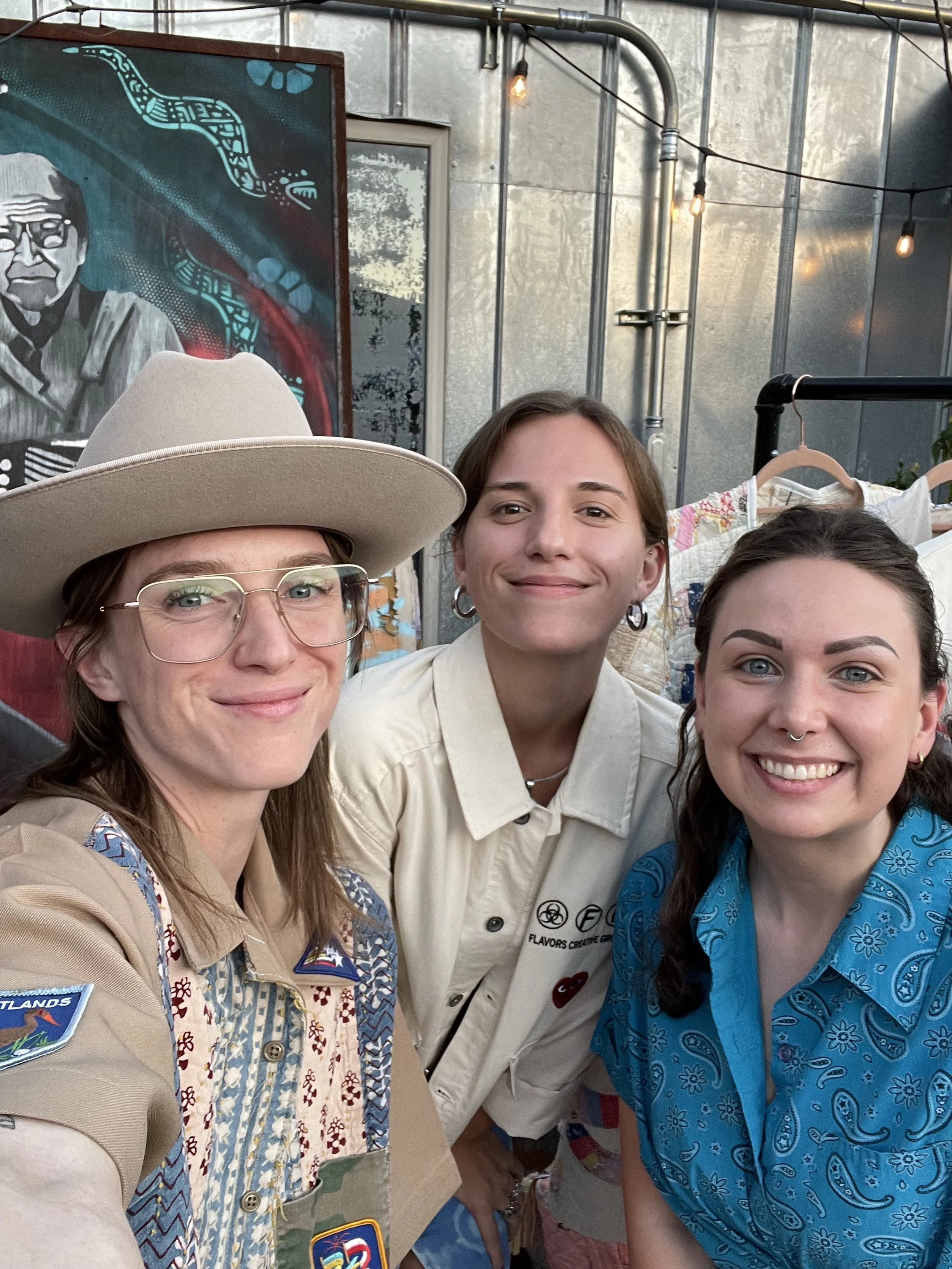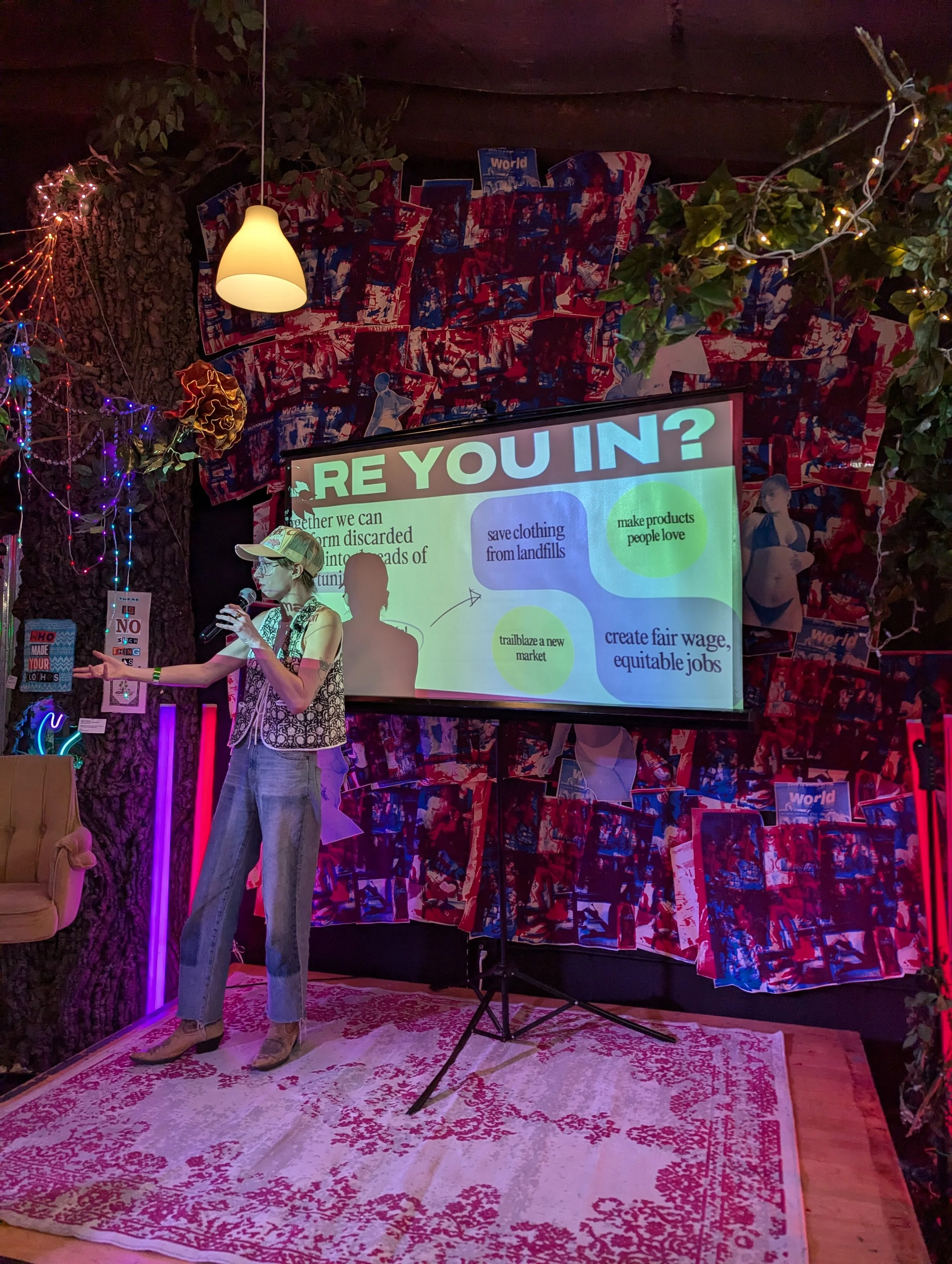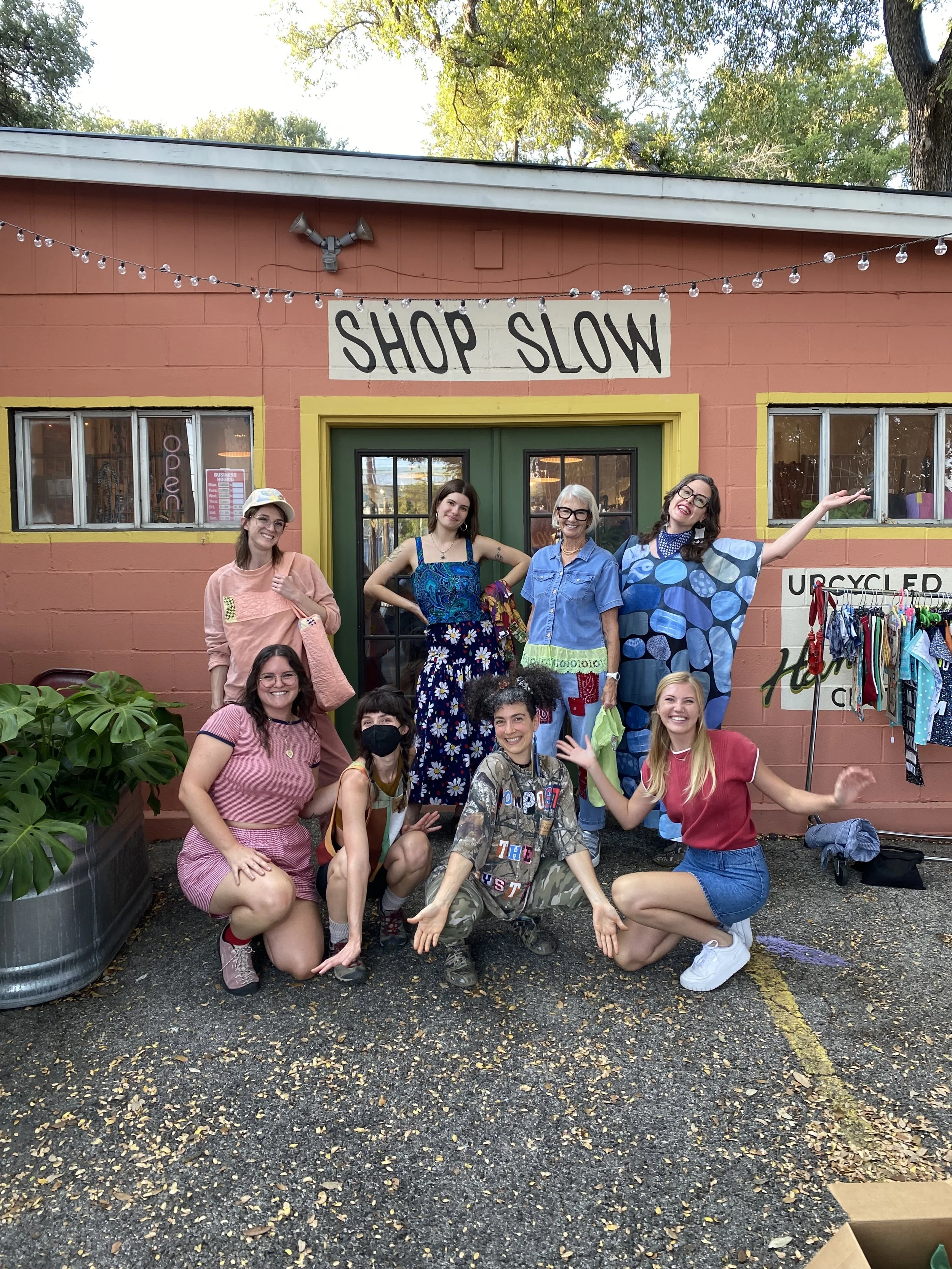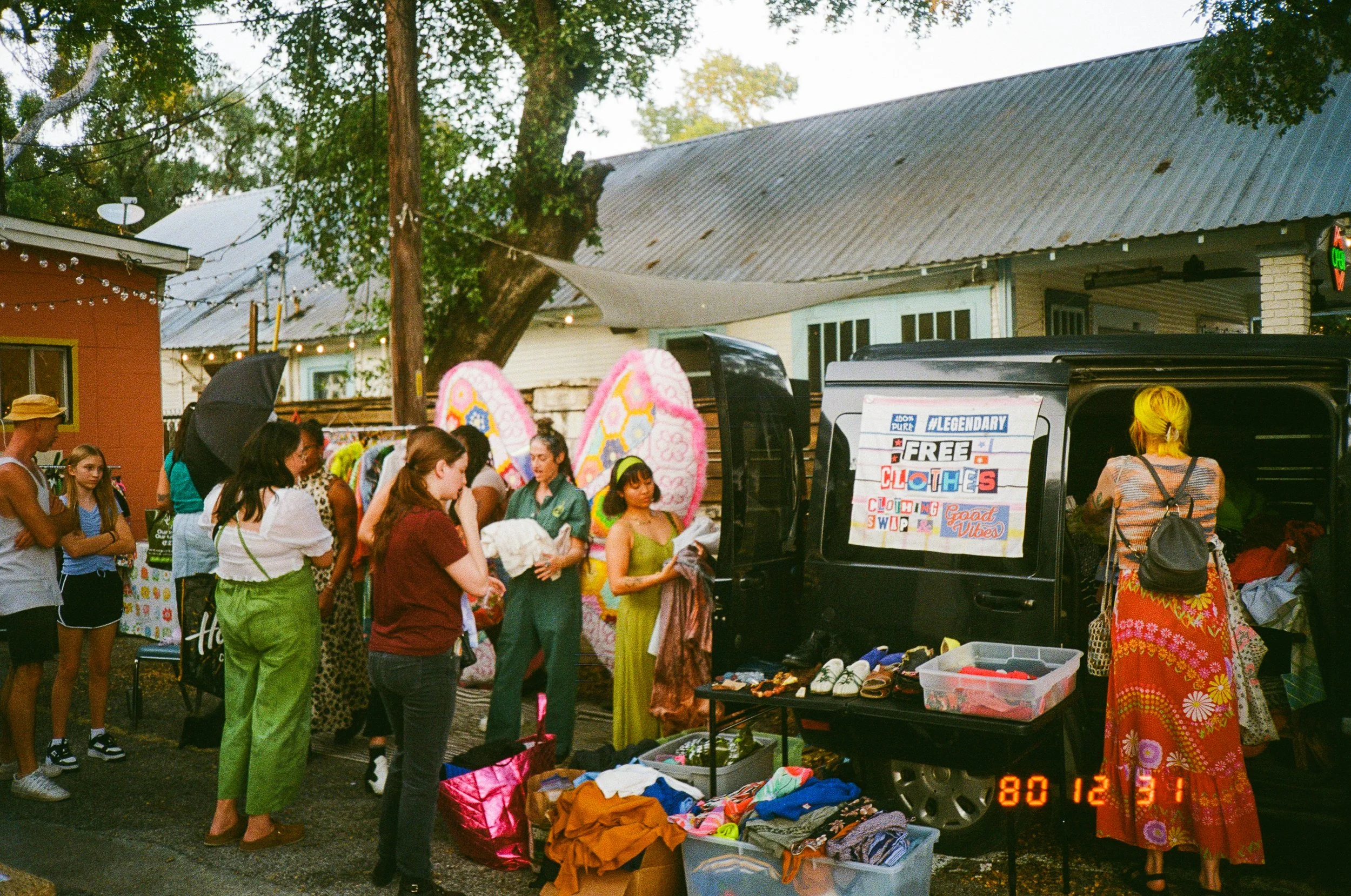Recap: My Slow Fashion Fest 2024 Talk on Textile Waste & Circular Solutions
Last fall, I had the opportunity to speak at Slow Fashion Fest, which was especially meaningful because the idea for Material Union actually started at an event just like it.
Less than a year later, this vision is becoming real and that’s thanks to the creative, supportive community that exists here in Austin!
During my talk, I shared some of the realities of textile waste.
Goodwill Central Texas alone is left with over 1 million pounds of unsellable textile waste every month.
As a city, Austin generates an estimated 64 million pounds of textile waste annually — equal to three Eiffel Towers in weight.
Fast fashion brands like Shein fuel overconsumption, adding up to 10,000 new items per day online.
Clothing is now discarded after an average of 7–10 wears.
Every garment touches up to 80 hands in production, and when it costs $5 new, workers are the ones paying the price.
Despite good intentions, most donated clothing doesn’t stay local. Much of it is exported through ports like Houston to countries such as Chile, Ghana, Kenya, and India, where it becomes a waste burden instead of a resource.
At the same time, every garment touches as many as 80 pairs of hands in its production. When something costs $5 new, that means someone along the chain isn’t getting paid fairly.
What Material Union is doing differently.
At Material Union, our goal is to keep textiles in Austin and within Texas. We hand-sort everything we receive, which creates fair-wage, green jobs. Pieces that can be reused are:
resold locally
donated to organizations like Dress for Success or Heartening
or upcycled into new garments and goods
Items that are stained, damaged, or otherwise “unusable” can be cut into rags, linens, napkins, or other useful products. Whatever remains gets shredded into stuffing, which can be used in furniture and, eventually, home insulation, replacing fiberglass.
It’s shocking, but only about 1% of clothing today gets recycled into stuffing or industrial rags. Yet this market is already valued at $1.7 billion, and there are only a handful of facilities in the U.S. doing it. That means enormous opportunity for job creation, local manufacturing, and climate-positive impact.
Industry realities we don’t talk about enough
Even within secondhand supply chains, labor conditions can be harsh. Workers in sorting warehouses often earn minimum wage, lack healthcare coverage, and work in temperatures over 100°F. At the same time, the U.S. continues selling virgin polyester fiberfill (Poly-Fil) while millions of pounds of polyester garments sit unused.
There’s reason to be optimistic
In September 2024, California passed SB 707, the Textile Recovery Act, which will require major brands (Shein, Zara, H&M, etc.) to fund textile recycling infrastructure. As this movement spreads, new facilities will open across the country — and eventually, brands themselves will be accountable for where their products end up.
My long-term hope is that once we build infrastructure and community demand, we gain the leverage to reduce textile waste at the source.
Why this matters personally
For many of us, “recycling” feels like putting something in a bin and watching it disappear. But nothing truly goes away. Where our clothing ends up is a personal responsibility — and something we can also help solve.
That’s why I want Material Union to be community-facing. When we secure our facility, I plan to host:
mending classes,
creative workshops,
community events,
and collaborative product development.
We need more spaces in Austin where people can gather, learn, and imagine a circular future together.
We’re building threads of opportunity
I’m tired of climate doomism and the narrative that nothing can be done. We can do good, creative work that generates abundance while benefiting people and planet. When hundreds of community members say “this matters,” change becomes possible.
So — are you in?
Let’s build circular systems, green jobs, and new economies that keep materials in use and benefit our communities for decades to come.
If you’re inspired, want to collaborate, or have an idea for a recycled product line (yes, even quilted teddy bears!) reach out. There’s so much opportunity ahead, and we’re just getting started.







